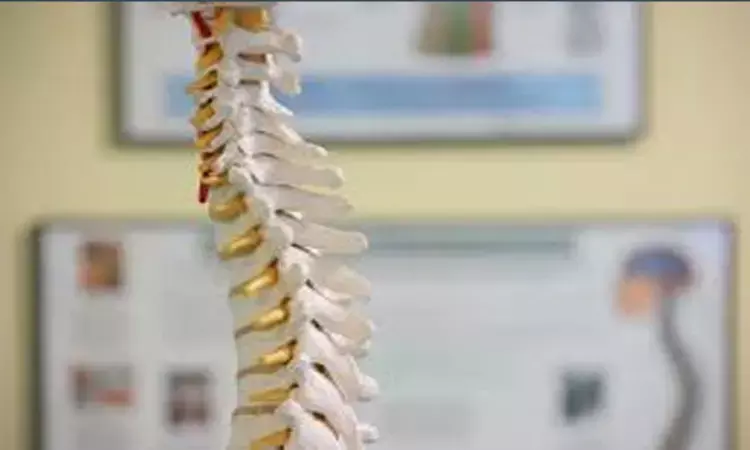- Home
- Medical news & Guidelines
- Anesthesiology
- Cardiology and CTVS
- Critical Care
- Dentistry
- Dermatology
- Diabetes and Endocrinology
- ENT
- Gastroenterology
- Medicine
- Nephrology
- Neurology
- Obstretics-Gynaecology
- Oncology
- Ophthalmology
- Orthopaedics
- Pediatrics-Neonatology
- Psychiatry
- Pulmonology
- Radiology
- Surgery
- Urology
- Laboratory Medicine
- Diet
- Nursing
- Paramedical
- Physiotherapy
- Health news
- Fact Check
- Bone Health Fact Check
- Brain Health Fact Check
- Cancer Related Fact Check
- Child Care Fact Check
- Dental and oral health fact check
- Diabetes and metabolic health fact check
- Diet and Nutrition Fact Check
- Eye and ENT Care Fact Check
- Fitness fact check
- Gut health fact check
- Heart health fact check
- Kidney health fact check
- Medical education fact check
- Men's health fact check
- Respiratory fact check
- Skin and hair care fact check
- Vaccine and Immunization fact check
- Women's health fact check
- AYUSH
- State News
- Andaman and Nicobar Islands
- Andhra Pradesh
- Arunachal Pradesh
- Assam
- Bihar
- Chandigarh
- Chattisgarh
- Dadra and Nagar Haveli
- Daman and Diu
- Delhi
- Goa
- Gujarat
- Haryana
- Himachal Pradesh
- Jammu & Kashmir
- Jharkhand
- Karnataka
- Kerala
- Ladakh
- Lakshadweep
- Madhya Pradesh
- Maharashtra
- Manipur
- Meghalaya
- Mizoram
- Nagaland
- Odisha
- Puducherry
- Punjab
- Rajasthan
- Sikkim
- Tamil Nadu
- Telangana
- Tripura
- Uttar Pradesh
- Uttrakhand
- West Bengal
- Medical Education
- Industry
Researchers develop new two-step technique to heal herniated disc

ITHACA, N.Y. - Researchers have developed a new two-step technique to repair herniated discs uses hyaluronic acid gel to re-inflate the disc and collagen gel to seal the hole. The new procedure of repairing ruptured discs resembles repairing a flat tyre.
After a rupture, a jelly-like material leaks out of a herniated disc, causing inflammation and pain. The injury is usually treated one of two ways: a surgeon sews up the hole, leaving the disc deflated; or the disc is refilled with a replacement material, which doesn't prevent repeat leakages. Each approach on its own isn't always effective.
A collaboration led by Cornell University professor Lawrence Bonassar combined these two methods into a new two-step technique that results in a "patched" disc that maintains mechanical function and won't collapse or deteriorate.
"This is really a new avenue and a whole new approach to treating people who have herniated discs," Bonassar said.
"We now have potentially a new option for them, other than walking around with a big hole in their intervertebral disc and hoping that it doesn't re-herniate or continue to degenerate. And we can fully restore the mechanical competence of the disc."
Bonassar's research group seeks engineering-based solutions for degenerative disc disease. Over the last decade, the group has developed a collagen gel that incorporates riboflavin, a photoactive vitamin B derivative. Instead of sewing up a ruptured disc, the researchers can patch it by applying their gel and shining a light on it to activate the riboflavin.
The resulting chemical reaction causes fibres in the collagen to bond together and the thick gel stiffens into a solid. Most importantly, the gel provides a more fertile ground for cells to grow new tissue, sealing the defect better than any suture could.
The technique only takes five or 10 minutes and can be applied in conjunction with a discectomy, the hourlong procedure by which the leaked nucleus pulposus is removed from the nerve root. The technique could be used to address other types of disc degeneration, or integrated into other spinal procedures and therapies.
For more details click on the link: http://dx.doi.org/10.1126/scitranslmed.aay2380
Hina Zahid Joined Medical Dialogue in 2017 with a passion to work as a Reporter. She coordinates with various national and international journals and association and covers all the stories related to Medical guidelines, Medical Journals, rare medical surgeries as well as all the updates in the medical field. Email: editorial@medicaldialogues.in. Contact no. 011-43720751
Dr Kamal Kant Kohli-MBBS, DTCD- a chest specialist with more than 30 years of practice and a flair for writing clinical articles, Dr Kamal Kant Kohli joined Medical Dialogues as a Chief Editor of Medical News. Besides writing articles, as an editor, he proofreads and verifies all the medical content published on Medical Dialogues including those coming from journals, studies,medical conferences,guidelines etc. Email: drkohli@medicaldialogues.in. Contact no. 011-43720751


